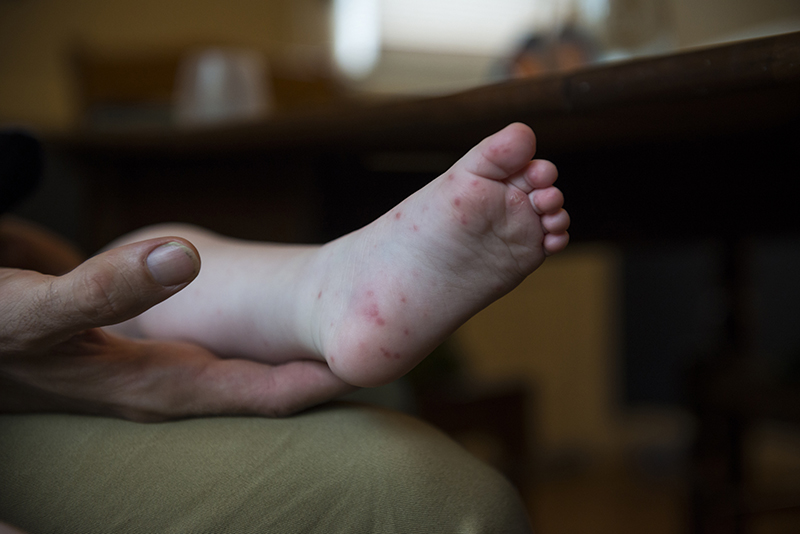Families For Life | Hand, Foot and Mouth Disease-Babies

Hand, foot and mouth disease is a common childhood illness, especially among preschoolers. It comes up as small mouth ulcers and blisters on your child’s hands and feet. It spreads very easily, but it’s usually pretty harmless.
Causes of hand, foot and mouth disease
Hand, foot and mouth disease is caused by the coxsackie A virus.
The virus is in fluids from the nose, mouth and chest, and spreads when children sneeze and cough, or when they touch the fluid inside the blisters. The virus is also in the poo of infected children.
Hand, foot and mouth disease is very contagious among groups of children, but it’s usually a fairly mild and harmless infection.
This disease has nothing to do with animal foot and mouth disease. You can’t get it from animals.
Symptoms of hand, foot and mouth disease
Outbreaks of hand, foot and mouth disease mainly affect preschool children. The incubation period is 4-6 days – that is, the virus infects your child 4-6 days before you see any symptoms.
Your child might have a mild fever for a day or two before the other symptoms appear. Small mouth ulcers usually appear first on the cheeks, gums and sides of the tongue. Your child might also complain of a sore mouth or throat, or just go off her food and refuse fluids.
Your child might also have a headache and aching muscles, or complain of mild stomach pain or nausea.
Small blisters also appear on the hands and feet, usually on the palms and soles. Tiny red spots might appear on your child’s bottom, but these usually don’t form blisters. The rash usually clears up after 7-10 days.
Your child is infectious until the blisters are gone.
When to see your doctor about hand, foot and mouth disease symptoms
You should take your child to the General Practition (GP) if your child:
is refusing fluids as well as solids
is showing signs of dehydration – not as much urine as usual, pale and thin, sunken eyes, cold hands and feet, drowsiness
has a high fever in addition to a rash, or is generally unwell
has a headache, stiff neck or back pain.
You should also go to the doctor if you think your child might have hand, foot and mouth disease, or you’re not sure what has caused the fever and rash.
Treatment for hand, foot and mouth disease
There’s no cure for hand, foot and mouth disease. All you can do is treat the symptoms.
Paracetamol can ease discomfort and lower any fever. You should also try to get your child to drink fluids to avoid dehydration. This might be hard, because your child’s mouth could be sore. You might try oral rehydration solution, which you can buy from any pharmacy. You can get it as icy poles.
If eating hurts your child, it’s best for him to stick to soft foods for several days, and to avoid tangy foods such as tomatoes, lemons, grapefruit and oranges.
Hand, foot and mouth disease is usually not a serious illness. Most children get better quickly without any complications.
Prevention of hand, foot and mouth disease
You can’t stop your child from getting foot and mouth disease.
Careful handwashing, especially at child care and preschool, can help minimise the spread of the virus.
© raisingchildren.net.au, translated and adapted with permission
Explore more